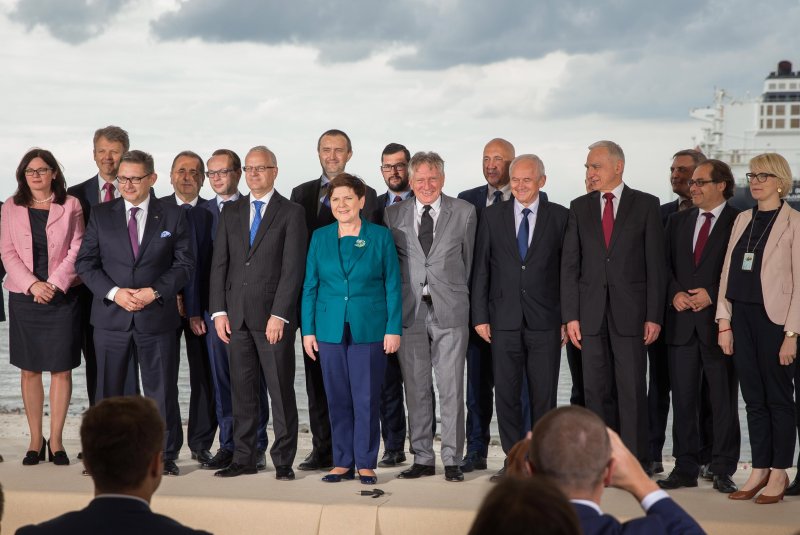June 13 (UPI) -- The first shipment of American liquefied natural gas from Louisiana's Cheniere Energy arrived in Poland on Wednesday, a feat hailed as an energy milestone in both Poland and Europe.
Some U.S. commentators have even suggested that American suppliers could help end Polish dependence on Russia's state oil company, Gazprom, which provides 59 percent of the country's annual natural gas consumption. Poland's government has said that it does not intend to renew its supply agreement with Gazprom when it lapses in 2022.
Planning to cut ties with its oil-rich neighbor is a challenging geopolitical endeavor, but it is just one part of Poland's much touted plan to become energy independent. Fully 45 percent of the country's primary energy demand and 80 percent of its total electricity generation is provided by coal, produced chiefly in the Silesia region.
In coal-powered electricity, Poland is second only to South Africa. Natural gas, a comparatively clean technology, supports only a limited portion, some 14 percent, of the country's overall energy demand.
Coal country
Since joining the European Union in 2004, Poland — the bloc's seventh-largest economy — has enjoyed an unbroken streak of economic growth, fueled largely by a continuous, cheap and domestic supply of coal. Warsaw has no intention of forsaking this critical energy resource, as successive governments have made clear.
In November 2013, long before the current government took power, then-deputy prime minister Janusz Piechocinski flatly told the European Parliament that regardless of any decision over capping carbon dioxide emissions in Europe, his country would not abandon coal.
Shortly after taking office in August 2015, Poland's current president, Andrzej Duda, used the occasion of Saint Barbara's Day, the patron saint of miners, to recall that 100,000 jobs depended on coal, an energy source that "is the basis of Poland sovereignty."
The Polish government only partly welcomed the European Union's emissions targets, such as the recent "winter package," making good use of treaties that give member states complete rights to choose their fuel mix. Mostly, Warsaw has interpreted EU's policies as attempts to limit the country's use of coal.
They're not off base. The EU was a world leader in clean coal technologies from 1980 to 2005, in large part because of the European Commission's leadership.
Clean energy alternatives
Rather than banish coal, Poland has largely tried to complement it. In seeking to find alternative sources of energy beyond Russia and coal, the government authorized the construction of the Swinoujscie gas terminal in 2014, where the Cheniere shipment is expected to arrive.
Lithuania is a second source of gas; in October 2014, it opened a liquid natural gas terminal in Klaipeda and is currently receiving European Commission funding to build the GIPL Gas interconnector Poland–Lithuania, which will have a capacity of 2.4 bcm.
A third option currently in planning stages is the proposed Baltic-Pipe Poland-Denmark gas interconnector. This could deliver about 10 bcm of annual Norwegian gas to Poland, but it's years from being operational.
Nuclear energy, long present in the Polish domestic debate, is also an unlikely immediate substitute. Though the Polish government announced in 2005 that its first nuclear plant would be put into operation "soon after 2020," those plans have not advanced beyond "localization and environmental studies."
At this rate, imported liquid gas seems unlikely to be able fulfill Poland's domestic needs, which average out at 15 bcm per year, any time soon.
Collaborative carbon capture
But there is one way out. Leveraging carbon capture and storage techniques, Poland could meet its energy needs while complying with EU prerogatives on carbon dioxide.
Clean coal technologies are being used and developed outside Europe in countries that, like China and India, have similar energy mixes as Poland. There, governments are encouraging the use of technologies that reduce emissions and pollution generated by coal without impeding pressing energy needs.
In India, Energy Minister Piyush Goyal is implementing a plan to retire outdated thermal coal facilities and replace them with more efficient, less polluting supercritical plants. Around 3,000 MW worth of outdated capacity has been retired, helping alleviate India's chronic air pollution and encouraging the adoption of more efficient, modern facilities.
India is also home to smaller scale carbon capture storage and utilization projects that have the potential to make these technologies economically viable for the first time.
Carbon capture and storage technology is a EU priority and, as the International Energy Agency modeled in 2015, its widespread implementation will be critical in meeting the global climate targets set by the Paris climate accord.
But the Polish government seems to be taking the stance that new coal energy technologies must be developed domestically. At the Fourth Power Ring Conference held in Warsaw in December 2016, Energy Minister Krzysztof Tchórzewski said Poland would develop its own coal gasification technology to implement IGCC projects.
Poland's resources might be better utilized by collaborating with outside partners on technologies to reduce coal emissions. In ensuring its own energy security and contributing to the EU's climate targets, Warsaw could preserve its domestic priorities while also contributing to Europe's sustainable development.
![]() American liquefied natural gas is a welcome development for Poland, but the shipment will not significantly change Poland's energy security picture.
American liquefied natural gas is a welcome development for Poland, but the shipment will not significantly change Poland's energy security picture.
Samuele Furfariis a professor of geopolitics of energy at the Université Libre de Bruxelles. This article was originally published on The Conversation. Read the original article.















